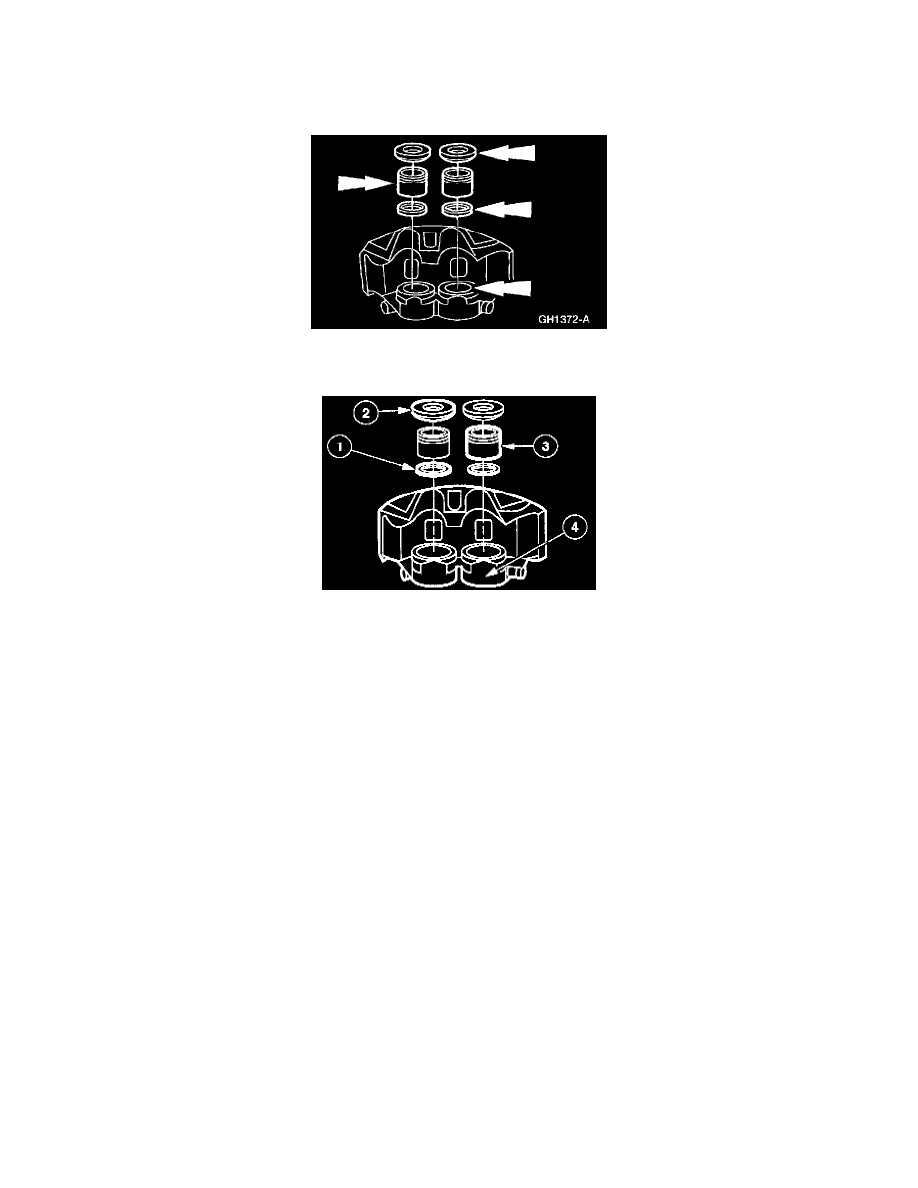Expedition 2WD V8-281 4.6L SOHC (1998)

CAUTION: Never reuse piston seals and dust boots.
NOTE: Never reuse brake fluid that has been drained from the hydraulic system or has been allowed to stand in an open container for an extended
period of time.
1. Lubricate the piston boot, caliper piston, piston seal, and cylinder bores with High Performance DOT 3 Brake Fluid C6AZ-19542-AB or
equivalent DOT 3 fluid meeting Ford specification ESA-M6C25-A.
2. Install the caliper pistons.
1
Install the piston seal.
2
Install the piston boot on the caliper piston.
3
Insert the caliper piston.
CAUTION: Be careful not to damage or dislodge the piston seal.
4
Press the caliper piston into the cylinder bore.
CAUTION: Be careful not to cock the caliper piston.
3. Install the disc brake caliper.
Removal and Installation
REMOVAL
WARNING:
-
ASBESTOS FIBER DUST MAY BE PRESENT ON BRAKE AND CLUTCH ASSEMBLIES AND IS HAZARDOUS TO HEALTH
IF INHALED.
-
BRAKE AND CLUTCH ASSEMBLIES SHOULD BE CLEANED USING A VACUUM CLEANER RECOMMENDED FOR USE
WITH ASBESTOS FIBERS SUCH AS BRAKE/CLUTCH/SERVICE VACUUM. THE BAG MUST BE LABELED PER OSHA
INSTRUCTIONS, SEALED, AND THE TRASH HAULER NOTIFIED AS TO THE BAG'S CONTENTS.
-
IF A VACUUM SUITABLE FOR ASBESTOS IS NOT AVAILABLE, CLEANING SHOULD BE DONE WET. IF DUST
GENERATION IS STILL POSSIBLE, TECHNICIANS SHOULD WEAR GOVERNMENT-APPROVED TOXIC DUST
PURIFYING RESPIRATORS.
-
OCCUPATIONAL HEALTH AND SAFETY ACT (OSHA) REQUIRES AREAS WHERE ASBESTOS DUST GENERATION IS
POSSIBLE TO BE ISOLATED AND POSTED WITH WARNING SIGNS. ONLY TECHNICIANS PERFORMING BRAKE OR
CLUTCH REPAIR SHOULD BE PRESENT IN THE AREA.
